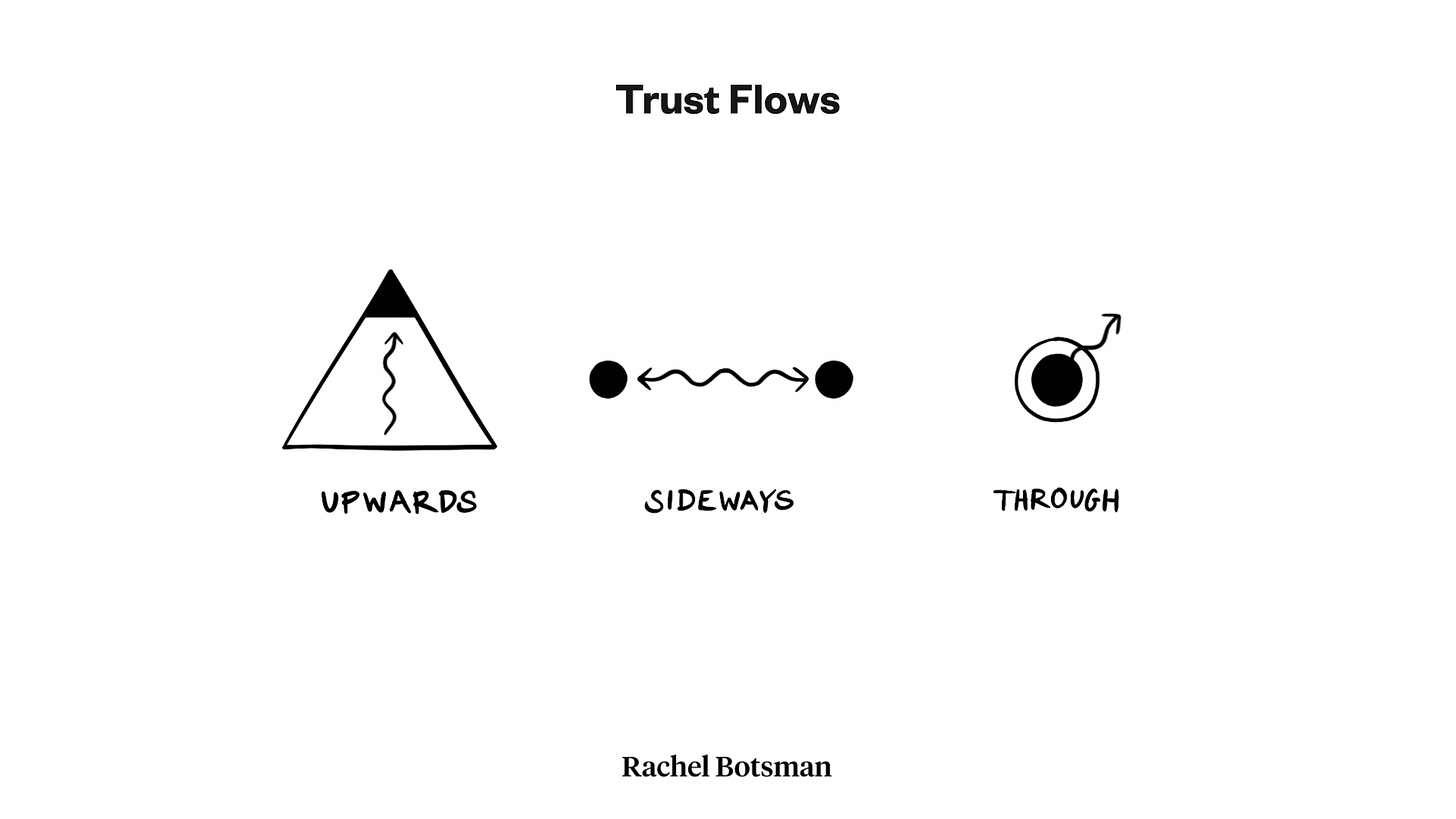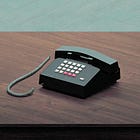Leading in the AI era: Embracing asynchronous work with trust
What if trust, not time, is the true currency of work?
This guest post was written by Nola Simon, a hybrid/remote work and leadership strategist. I’ve known Nola for several years: I interviewed her and was a guest on her podcast. She always has insightful perspectives on the future of work.
You can learn more about Nola on her website.
Asynchronous practices — and the systems behind them — are how organizations and individuals can thrive as technology evolves. Here’s why the future of work is rooted in flexibility and care.
What is asynchronous work?
We intuitively understand asynchronous work when it’s not described that way. Emails, voicemails, faxes, letters are all examples of asynchronous communication. If you’ve read a book or listened to a recording of music, that’s asynchronous. A play in a theatre is synchronous; streaming the Disney recording of Hamilton, that’s asynchronous. Live concerts are synchronous; the documentary about the tour is asynchronous.
Even school is designed with a combination of the two — classes taught in person by a teacher at the school or live on Zoom with a full cohort of students are synchronous. Homework is asynchronous by design. The idea is to develop independent study, diligence, dedication, time management, and autonomy.
So much of what is written about asynchronous work and hybrid/remote work pertains to productivity and coordination of presence. It’s really missing the point of flexibility. If you can’t see your people, you must trust them to do the work. This is the basis of the very first org chart ever created.
In 1855, David McCallum, the general superintendent of the New York and Erie Railroad, designed a dynamic, trust-based system conceived as a way of dealing with an overflow of information and delegating decision-making. A tale as old as time. A big part of this was defining roles and responsibilities so people understood what was expected of them. Documentation, in other words.
Rachel Botsman, an expert in trust, showcased an in-depth study of this artifact at the London Biennale in June 2025. What you notice first is that the head of the organization is at the bottom of the chart. Leadership is at the root and the chart itself appears to be a willow tree, known for flexibility and which grew all along the railway, meaning it was familiar to everyone it referenced.
“…who do we have to thank for the pyramid? IBM. We went from this beautiful living system to linear, static, rigid lines... It amazes me that this is over a hundred years old.”
– Rachel Botsman
I happen to read org charts for fun, but mostly what I’m looking for isn’t on the printed chart. It’s the messiness, the invisible network that works behind the scenes. It’s the nepotism, friendships, and unseen influence that never gets documented. The stories that bring the chart to life.
Trust and documentation as infrastructure
The interesting thing about documenting roles, responsibilities, general knowledge, standard operating procedures, assumptions, constraints, and decision-making is that they become institutional knowledge. A culture of attribution develops and becomes policy; that very attribution creates visibility and credibility. If there is insufficient documentation, organizations suffer when turnover happens. But this documentation also facilitates flexibility, asynchronous work, which in turn sets the stage for AI adoption.
The cost of proximity bias
Imagine if the shift to asynchronous means that meetings that could have been emails disappear because they are expensive and unproductive. Imagine if proximity bias has a cost assigned per person, and that cost is deducted from department budgets.
Imagine if metrics track who books the most meetings and therefore wastes the most time and money, transcripts surface who speaks the most and listens the least.
Imagine if we had all started this back in 2020 instead of devoting so much time and money to return to office mandates? What we resist, persists.
Transparency is not trust because trust is a confident relationship with the unknown but what if leadership focuses on how we become confident? How do we shift to trusting each other? Trust is reciprocal and should be celebrated. What if leadership became about telling the story of trust? What if team engagement focuses on demonstrating examples of AI experimentation at all levels of the organization? There are companies already successfully implementing these approaches – think Dropbox, Gitlab, Shopify, Atlassian.
“To understand the disruption happening, it’s helpful think of trust like energy: It doesn’t get destroyed; it changes form. Local trust flowed sideways, directly from person to person. Institutional trust flowed upwards to leaders, experts, referees, and regulators. Distributed trust changed the flow back sideways but in ways and on a scale never possible before. Now, with the rapid advancement of AI, autosapient trust will flow through an AI agent.”
– Rachel Botsman
Rethinking leadership and hiring
If you document well, the skills you are hiring for change. No longer are you hiring for people who run great meetings, present, negotiate, and collaborate well in real time. You are looking for people who are autonomous and have agency and who can discern when meetings fuel the work.
When you are hiring people who have a high degree of self-trust and initiative, the role of management and leadership changes, too. The role shifts from monitoring compliance and task completion to removing barriers that stall momentum. Leadership becomes care: assessing overwork to prevent burnout, proactively creating opportunities to connect and nurture a sense of belonging. Gathering will still matter but mattering means more than just physical presence.
"If you want anything to matter to someone, they first have to believe that they matter to you. Nothing matters to someone who doesn't first believe that they matter. It's very difficult for anything to matter to someone who doesn't first believe that they matter.”
- Zach Mercurio
The fastest way to improve productivity is to subtract useless tasks. Automation can help with that significantly. The key is to develop the skills and instinct to verify and trust more quickly than we have until now.
I once campaigned for 10 years to eliminate a process that absorbed the time of 300 staff with very little reward. Automation eliminated this within a week. Corporations must invest in career development at all levels, upskilling and providing valuable resources that are challenging to access outside of corporate. Empathy, critical thinking, and discernment become scarce but increasingly valuable. Think curation rather than gathering more content and information. Perks will no longer be the nice to have but the differentiator in whether the best of the best work for you or for themselves.
If it’s true that AI will reduce corporate headcount, how do we retain the very best when gig work and freelancing become attractive and viable options? Trust doesn’t disappear; it just changes shape. Do the people with the skills you need trust you more than they trust themselves to be able to provide for the lives they want to live? The need to earn money won’t likely disappear, and companies that run on AI presumably still want customers who have disposable income to be able to purchase the products and services they provide.
Systems, automation, and AI aren’t just for corporate
Automation and subtraction are not just a productivity tactic corporations can use —it can be a matter of survival for the small business and the self-employed.
In her essay I’m Self-Employed. And I Have a Brain Tumor, Anna Burgess Yang describes preparing her business for her absence as she faced brain surgery. She carefully planned systems so others could help, pre-scheduled content, and set clear expectations for clients. This essay is part of the system Anna designed to facilitate her recovery process. I’m honoured that she trusts me to help.
Over the years, Anna and I have only met on Zoom twice to conduct two interviews, one which became a podcast and the other a long form Substack. Most of our interaction happens asynchronously online on various platforms like LinkedIn, Threads, and Medium. Trust without presence is entirely possible.
This protocol wasn’t something Anna built overnight. And obviously, she wasn’t planning for a brain tumour when she designed it for her business. She had already invested in systems, automation, and AI to support her ongoing work. The fact that it already exists means that with some tweaks, she can focus on her health and her family without worrying about every operational detail.
Her approach shows that subtracting busywork and designing for asynchronous support isn’t just efficient—it’s proactive self-care. It enables resilience when life demands our full attention, making work sustainable and adaptable even in crisis.
Anna’s story is a profound reminder: The way we choose to work and the tools we choose to use enable systems and systems enable the work. Even when we can’t be present.
Asynchronous work isn’t just a shift in schedule — it’s a shift in how we lead, how we trust, and how we build systems that sustain us in uncertainty.
I’ll be writing more about my Brain Tumor Journey in my personal blog. If you’d like to support my recovery, I have a GoFundMe or you can buy me a coffee.
You can also subscribe to support this publication as I continue to write during my Brain Tumor Recovery.





